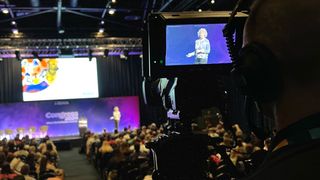Conquering Challenges in the Craft of Video Image Mapping Execution
Wiki Article
Visual projection mapping is an innovative method that transforms common surfaces into engaging displays. This technique enables artists and design professionals to project images and footage onto items like buildings, statues, or stages, creating an immersive aesthetic experience. However, despite its capabilities, executing video projection mapping successfully comes with several obstacles. Understanding and overcoming these hurdles is essential for anyone seeking to create impactful projection art.
One of the primary difficulties in video projection mapping is ensuring that the projected image matches perfectly with the object. This process, known as "mapping," demands accurate calculations and calculations. If the display is not matched correctly, the visuals can appear distorted or off. To address this problem, creators often use dedicated software that assists in mapping the graphics to the object's dimensions. Moreover, conducting comprehensive tests before the ultimate projection can help identify any discrepancies and enable for modifications to be made.

Another significant challenge is the varying luminosity and color of the displayed images. Different materials respond differently to illumination, which can affect how the shades appear once cast. For instance, a light-colored surface will bounce brightness differently than a deep one. To overcome this, creators must consider the material characteristics before selecting the hues and light levels for their projections. Testing the display on the real surface during the planning phase can provide essential insights into how the ultimate show will look.
Technological difficulties can also create a hurdle in video projection mapping. Issues such as equipment failure, software glitches, or connectivity problems can disrupt the entire production. To reduce these threats, it is vital to conduct thorough hardware checks and have contingency plans in place. This can this website comprise having extra cables, projectors, and even alternative software choices ready to go. Being prepared for technical issues can ensure a smoother implementation of the projection.
Finally, viewers' engagement is an important aspect of video projection mapping. While the visuals are critical, how the audience interact with the display can make a significant difference. Creators must think about how to design their projections to captivate viewers’ attention and encourage interaction. This can involve incorporating Continue Reading elements that invite participation or create a story that resonates with the audience. Gathering feedback from test audiences can also help refine the presentation to enhance engagement.
In conclusion, overcoming challenges in video projection mapping requires careful planning and creativity. By addressing the challenges of alignment, brightness, technical issues, and audience engagement, creators can produce stunning and impactful projections. With the appropriate approaches in position, video projection mapping can change common areas into remarkable encounters, engaging viewers and creating a lasting impression.